Pia Mellody Worksheets: Understanding Boundaries and Codependency
Explore the world of Pia Mellody’s worksheets, designed to foster understanding of boundaries and codependency․ These resources offer practical tools for self-discovery, addressing family issues, trauma, and enhancing self-worth․ Discover how these worksheets guide you towards healthier relationships and personal growth․
Pia Mellody is a world-renowned mental health professional whose work centers on self-value, codependency, and trauma․ Her pioneering approach offers individuals a path to recovery and self-discovery․ Mellody’s teachings emphasize the importance of understanding one’s self and establishing healthy boundaries to foster confidence and clarity in all interactions․ Her work provides a safe base for operating in the world effectively․ Mellody’s innovative methods, including step-by-step journal-keeping, are designed to help individuals recover from codependency․ Her work also addresses emotional, spiritual, intellectual, physical, and sexual abuses․ Mellody’s teachings offer a comprehensive approach to healing and personal growth․
Core Concepts of Pia Mellody’s Teachings
At the heart of Pia Mellody’s teachings lies the concept of internal boundaries, crucial for retaining a sense of self while engaging in close relationships․ Her work emphasizes valuing oneself and understanding the origins of codependence, often tracing back to childhood experiences․ Mellody’s core principles focus on protecting one’s reality during intimacy and establishing a strong sense of identity․ She identifies key issues such as resentment, enmeshment, and dependency, offering tools to address them․ Mellody’s approach highlights the importance of self-care and interdependence, guiding individuals towards healthier ways of relating․ Addressing shame, fear, and guilt is also central to her teachings․
The Importance of Self-Value and Boundaries
Pia Mellody emphasizes that self-value is intrinsically linked to establishing healthy boundaries․ Boundaries create a safe foundation for navigating the world with confidence and clarity, fostering personal growth and healthier relationships․ Without strong boundaries, individuals risk losing themselves, over-identifying with others, or allowing external factors to dictate their self-worth․ Setting limits helps protect against abuse and allows individuals to embody their sense of self․ Understanding the core needs of self-worth and boundaries is essential for overall well-being․ Mellody’s work guides individuals in recognizing their inherent value and implementing boundaries to safeguard it․
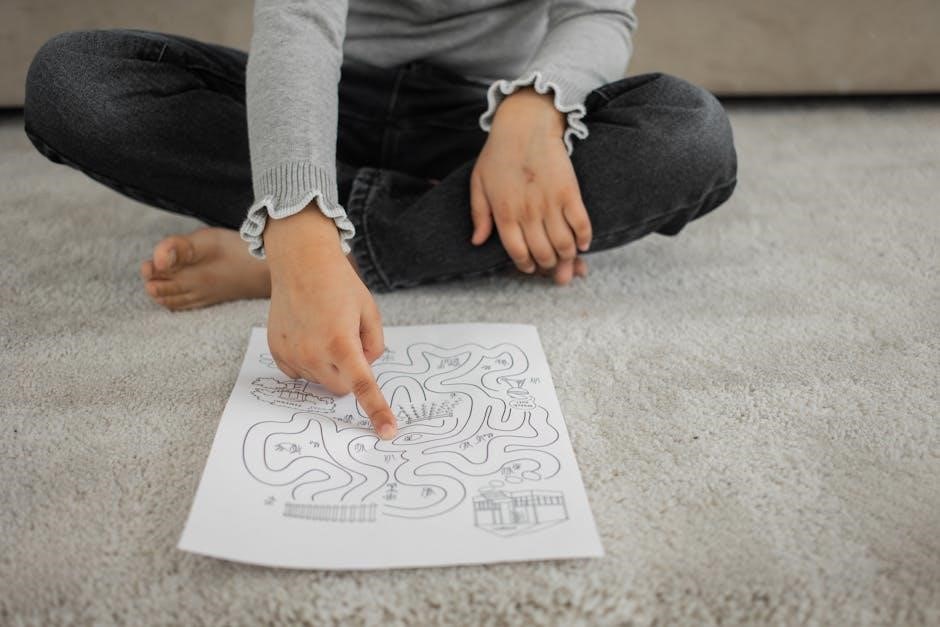
Understanding Boundaries According to Pia Mellody
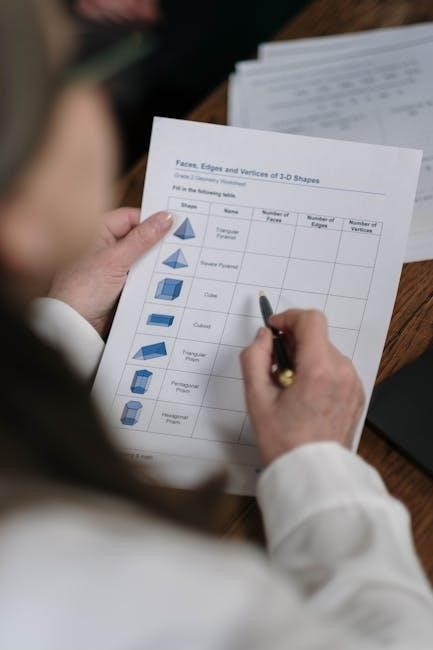
Discover Pia Mellody’s perspective on boundaries as essential for protecting oneself and fostering healthy relationships․ Her model emphasizes limit-setting to avoid victimization and ensure responsible interactions with others․
Definition of Boundaries
According to Pia Mellody, boundaries are systems of limit-setting that protect individuals from being victimized while also containing them to prevent offense to others․ These invisible, symbolic fences define personal space and identity, establishing a safe base for confident and clear interaction․ Boundaries safeguard one’s reality during intimacy, ensuring self-worth isn’t dictated by external influences․ They help maintain a sense of self, preventing loss within relationships and over-identification with others․ A boundary system includes external and internal components, protecting the body, thoughts, feelings, and behaviors, ultimately embodying a sense of self and promoting healthy interactions․
Purpose of Boundaries: Protection and Containment
The central purpose of boundaries, as defined by Pia Mellody, is twofold: protection and containment․ Boundaries protect individuals from abuse and victimization, creating a safe space where they can operate with confidence and clarity․ They prevent others from intruding into personal space and causing harm, both physically and emotionally․ Simultaneously, boundaries contain individuals, preventing them from encroaching on others’ spaces and behaving offensively․ This dual function ensures respect and consideration in relationships․ Boundaries establish identity and safeguard one’s reality during intimate interactions, fostering healthy connections․ By setting limits, individuals embody their sense of self, maintaining control and preventing external influences from dictating their worth․
Internal and External Boundary Systems
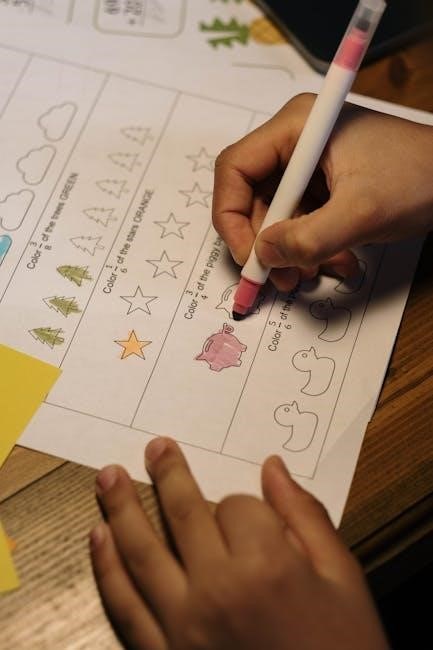
Pia Mellody’s boundary model incorporates both internal and external systems, each serving distinct protective functions․ The external boundary safeguards physical and personal space, controlling proximity and contact with others․ It dictates how close someone can stand and whether they can touch your belongings․ Conversely, the internal boundary protects thoughts, feelings, and behaviors, ensuring they remain functional․ This system filters information, blocks untrue statements, and manages questionable input․ By protecting thinking, feeling, and behavior, the internal boundary keeps them functional․ Understanding both systems is crucial for creating a comprehensive defense against harm and maintaining a healthy sense of self․ Recognizing the interplay between internal and external boundaries enhances self-awareness and promotes well-being․

Key Components of Pia Mellody’s Boundary Model
Pia Mellody’s model includes external boundaries for physical space, internal boundaries for thoughts and feelings, and a spiritual boundary․ These components work together to protect and define an individual’s sense of self․
The External Boundary: Physical and Personal Space
The external boundary, according to Pia Mellody, encompasses physical and personal space, defining how close others can get to you․ It’s about having the right to control touch and access to personal items, protecting against abuse․ Functional boundaries keep others from intruding and prevent us from overstepping into others’ spaces․ This boundary is a symbolic fence embodying our sense of self․
It involves setting limits to maintain a safe distance, preventing others from violating your physical or personal sphere․ Recognizing and enforcing this boundary is crucial for self-preservation and establishing a healthy sense of autonomy in relationships․
The Internal Boundary: Protecting Thoughts, Feelings, and Behaviors
The internal boundary, as highlighted by Pia Mellody, safeguards our thoughts, feelings, and behaviors, maintaining their functionality․ It involves filtering true statements addressed to us and blocking untrue ones․ Questionable statements require careful filtering, gathering data for clarity․ A strong internal boundary protects against losing control, preventing harm to others․
This boundary involves owning your reality, creating a safe space for personal thoughts and emotions․ It is critical for self-care and interdependence, allowing for genuine emotional expression without being overwhelmed by external influences․ Strengthening this boundary fosters self-awareness and emotional regulation․
The Spiritual Boundary
The spiritual boundary, a key component of Pia Mellody’s model, involves protecting one’s core values and beliefs․ It safeguards your connection to something greater than yourself, whether that’s a higher power, nature, or a sense of purpose․ This boundary helps maintain integrity and prevents spiritual violation, where others attempt to impose their beliefs or undermine your own․
It fosters a sense of inner peace and authenticity․ By respecting your spiritual boundary, you honor your unique path and avoid compromising your values for external validation․ This boundary supports personal growth and a deeper understanding of self, promoting a fulfilling spiritual life․
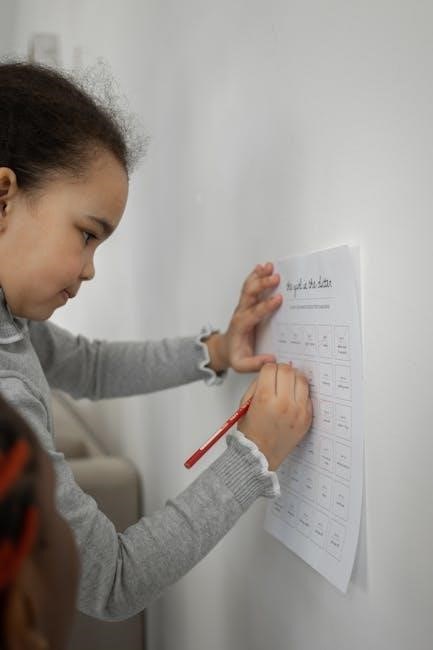
Pia Mellody’s Worksheets: A Practical Approach
Pia Mellody’s worksheets provide a hands-on approach to understanding boundaries and codependency․ These practical tools facilitate self-reflection, aiding in addressing trauma, family issues, and enhancing self-worth for personal growth․
Overview of Available Worksheets
Pia Mellody’s worksheets offer a comprehensive suite of tools designed to address various aspects of personal growth and relational healing․ These worksheets cover areas such as family of origin issues, trauma history, codependency patterns, and self-worth enhancement․ Specifically, there are worksheets dedicated to identifying and setting functional boundaries․ Furthermore, these resources delve into addressing the five core issues that often underlie unhealthy relationship dynamics․
Additionally, some worksheets focus on managing toxic and addictive relationship patterns, offering strategies for establishing healthier connections․ Many are designed to help individuals understand their internal and external boundary systems, promoting a safer and more defined sense of self․ Explore these worksheets to embark on a journey of self-discovery and boundary mastery․
Worksheets Focusing on Family of Origin Issues
Pia Mellody’s worksheets delve deeply into the impact of one’s family of origin on present-day relationships and self-perception․ These resources guide individuals in exploring early childhood experiences, identifying dysfunctional patterns inherited from their family system․ Specifically, some worksheets focus on how individuals were valued within their family, addressing issues of neglect, abuse, or emotional invalidation․
These tools also help uncover unresolved traumas and unmet needs that may be contributing to codependency or boundary issues․ By examining family dynamics, individuals can gain insight into their attachment styles and relationship templates․ Moreover, these worksheets promote healing by encouraging the development of healthier coping mechanisms and communication strategies, ultimately fostering improved self-worth and functional boundaries․
Worksheets Addressing Trauma History

Pia Mellody’s worksheets offer a structured approach to processing trauma history, acknowledging its profound influence on boundary formation and self-value․ These worksheets provide a safe space to explore past wounds, abuse, and relational traumas, fostering self-compassion and healing․ They guide individuals in identifying the ways trauma has impacted their ability to set and maintain healthy boundaries, often leading to codependent patterns․
Specifically, some worksheets delve into the history of abuse, prompting reflection on emotional, physical, or sexual violations․ By understanding the roots of their trauma, individuals can begin to disentangle past experiences from present behaviors․ Moreover, these resources encourage the development of coping strategies for managing triggers and flashbacks, promoting emotional regulation and resilience․ Through this process, individuals regain a sense of control over their lives and cultivate a stronger sense of self․
Worksheets Related to Codependency and Self-Worth
Pia Mellody’s worksheets address the intertwined issues of codependency and self-worth by providing tools for self-assessment and behavior modification․ These resources help individuals identify codependent patterns, enabling them to break free from unhealthy relationship dynamics․ The worksheets encourage users to explore their family of origin issues, recognizing how early experiences may have contributed to diminished self-worth and codependent tendencies․
Furthermore, they guide individuals in developing healthier boundaries and asserting their needs in relationships․ Worksheets focus on recognizing and challenging negative self-talk, fostering self-compassion, and building self-esteem․ By working through these exercises, individuals learn to prioritize their own well-being and cultivate a stronger sense of self-value․ Ultimately, this process promotes healthier, more balanced relationships rooted in mutual respect and emotional independence, leading to greater personal fulfillment․

Specific Worksheet Topics and Applications
Delve into targeted worksheets addressing functional boundary setting, the Five Core Issues, and managing toxic relationships․ These practical tools, inspired by Pia Mellody’s work, offer specific guidance for personal growth and healthier interactions․
Setting Functional Boundaries: A Detailed Guide
Pia Mellody’s framework emphasizes setting functional boundaries to protect personal space and foster healthy relationships․ Functional boundaries serve three crucial purposes: preventing others from violating our space, ensuring we respect others’ boundaries, and embodying our sense of self․ These invisible, symbolic fences are essential for self-respect and mutual respect in interactions․
Worksheets guide individuals in establishing these boundaries, focusing on physical, emotional, and spiritual aspects․ They help identify personal limits, communicate needs effectively, and maintain a safe distance from harmful influences․ By setting functional boundaries, individuals create a foundation for confident and clear interactions, fostering self-value and respectful relationships․
Identifying and Addressing the Five Core Issues
Pia Mellody’s work highlights five core issues crucial for understanding self-worth and relationships; These issues revolve around how individuals were valued in their family, needs being met, managing boundaries, dealing with reality, and expressing dependency․ Worksheets help individuals identify these core issues in their lives, tracing their origins and impact on current behaviors․
Addressing these issues involves acknowledging past experiences, understanding their effects, and developing healthier coping mechanisms․ Worksheets guide users in processing emotions, setting appropriate boundaries, and fostering self-compassion․ By identifying and addressing these core issues, individuals can heal from past traumas, build stronger self-esteem, and establish healthier, more fulfilling relationships․
Managing Toxic and Addictive Relationships
Pia Mellody’s worksheets offer guidance for navigating toxic and addictive relationships, focusing on recognizing unhealthy patterns and establishing boundaries․ These resources help individuals identify signs of manipulation, control, and codependency within their relationships․ Worksheets aid in understanding the dynamics of addiction and how it impacts relationship health․
Managing these relationships involves setting firm boundaries to protect oneself from harm and enabling behaviors․ The worksheets provide tools for developing self-care strategies and fostering independence․ They guide users in making informed decisions about the relationship’s future, whether that involves seeking professional help, setting limits, or ending the relationship for their well-being․ The aim is to empower individuals to prioritize their health and safety․

Applying Boundary Concepts in Relationships
Learn how to use boundary concepts in your relationships to foster healthier interactions and protect your well-being․ Understand others’ boundaries and practice effective communication techniques for mutual respect and understanding․
Using Boundaries to Protect Yourself
Pia Mellody’s work emphasizes that boundaries are essential for creating a safe space where individuals can operate confidently․ By setting functional boundaries, you prevent others from infringing upon your personal space and causing harm․ These boundaries act as invisible fences, both protecting you and preventing you from intruding on others․
Understanding and implementing these boundaries is crucial for maintaining self-value and preventing codependency․ They help you avoid losing yourself in relationships and ensure external influences don’t dictate your self-worth․ True statements should be filtered and felt, while untrue statements should be blocked, allowing for a more protected self;
Understanding Boundaries from Others’ Perspectives
In recovery, it’s beneficial to consider boundaries from the viewpoint of loved ones․ What may initially seem excessive or obnoxious can, upon closer examination, reveal a necessary protective measure․ Sometimes others set boundaries for you, and understanding their purpose is essential for healthy relationships․
Pia Mellody’s teachings highlight that boundaries protect a person from being victimized and contain them from offending others․ Stepping into another’s shoes allows for empathy and recognition of their needs․ By embracing this perspective, you foster mutual respect and understanding, leading to more balanced and fulfilling interactions․
The Talking Boundary Technique
Pia Mellody’s Talking Boundary technique provides a structured approach to expressing your limits effectively․ This method involves clearly stating what you heard, followed by your interpretation or feelings about it, creating a safe space for communication․ For instance, begin by saying, “When I heard you say [statement],” then add, “What I make up about that is․․․”
This technique enhances clarity and minimizes misunderstandings by explicitly stating your perspective․ It encourages vulnerability and openness, allowing for constructive dialogue․ By using “The Talking Boundary,” you foster respect and understanding in your relationships, ensuring your needs are acknowledged and addressed appropriately․
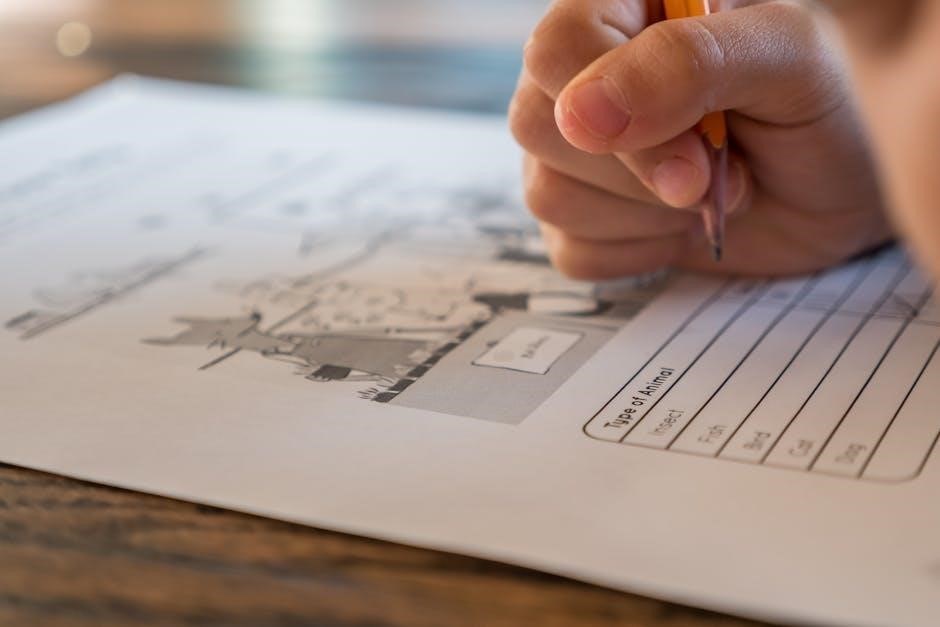
Resources for Further Learning
Delve deeper into Pia Mellody’s teachings through her insightful books and available workshops․ These resources offer comprehensive guidance for understanding boundaries, codependency, and personal growth․ Explore these tools to enhance your learning journey․
Books by Pia Mellody
Pia Mellody’s foundational work, “Facing Codependence,” explores codependency’s origins in childhood trauma, encompassing emotional, spiritual, and physical abuses․ It offers a pathway to recovery through understanding the self․
Her books delve into the core needs of children, such as self-worth and boundaries, providing readers with tools for self-discovery․ Mellody emphasizes that boundaries create a safe space, and her books guide readers in establishing these boundaries for healthier relationships․
These resources offer a step-by-step approach to understanding and overcoming codependency․ They provide insights into setting limits and protecting oneself from being a victim․ Mellody’s books are essential for anyone seeking to improve their self-awareness and build stronger, more fulfilling connections․
Workshops and Seminars Based on Pia Mellody’s Work
Immerse yourself in workshops and seminars inspired by Pia Mellody’s pioneering concepts, focusing on boundaries, codependency, and trauma recovery․ These interactive sessions offer practical tools for self-discovery and personal growth․ Experience guidance in setting functional boundaries to protect yourself and others․
Explore the core issues that affect relationships and self-worth․ Through experiential exercises, participants learn to manage toxic relationships and addictive patterns․
These workshops provide a supportive environment to understand and apply Mellody’s talking boundary technique․ Discover the importance of self-value and how to cultivate a stronger sense of self․ Benefit from insights gained through these seminars, fostering healthier connections and improved well-being․



